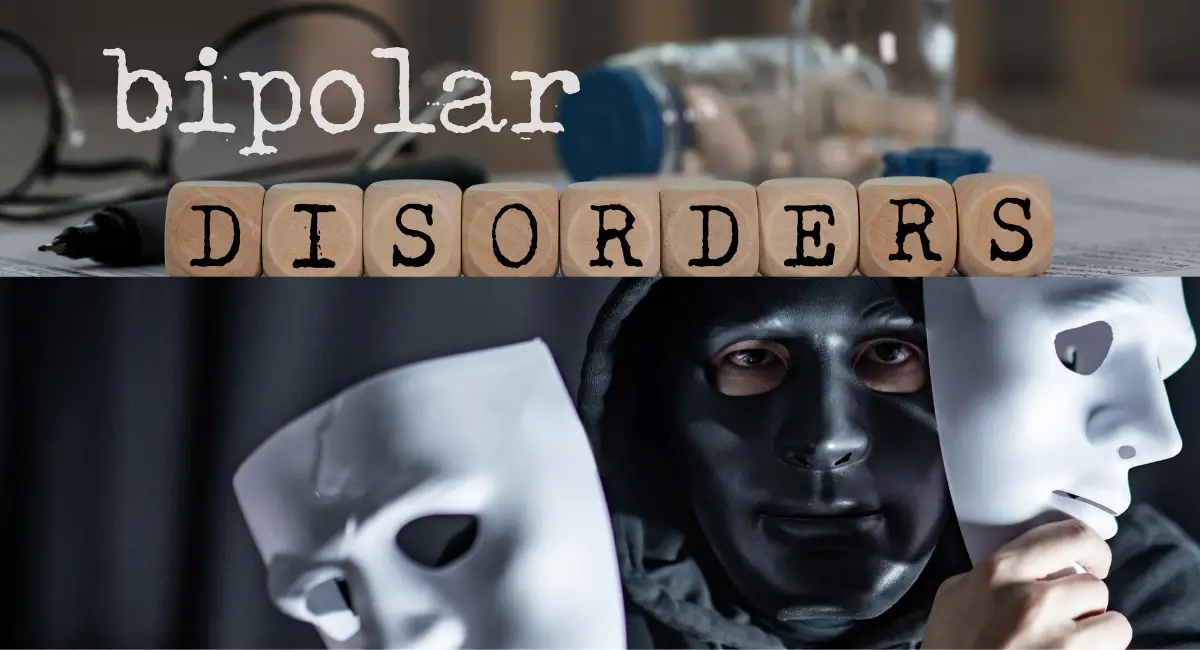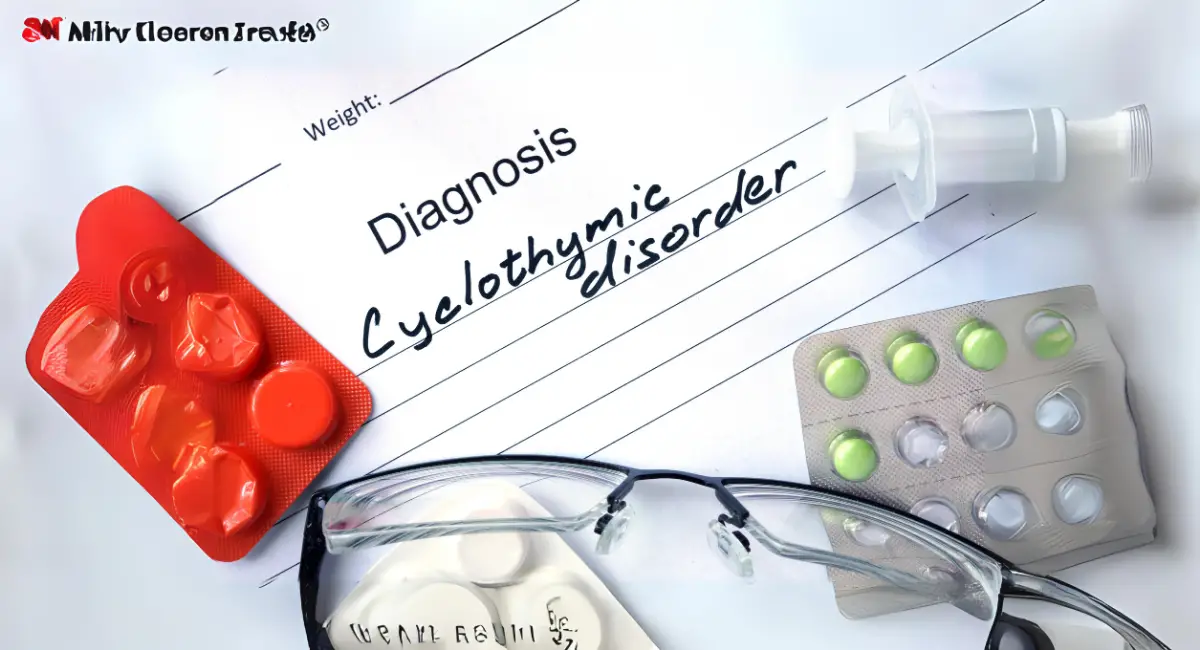
Disruptive Mood Dysregulation Disorder (DMDD) Symptoms: Causes, and Therapy Options
Contents
- 1 Introduction
- 2 Symptoms of Disruptive Mood Dysregulation Disorder (DMDD)
- 3 Common Symptoms of Disruptive Mood Dysregulation Disorder (DMDD)
- 4 Causes and Risk Factors of Disruptive Mood Dysregulation Disorder (DMDD)
- 5 Therapy and Treatment Options for Disruptive Mood Dysregulation Disorder (DMDD)
- 6 Long-Term Management of Disruptive Mood Dysregulation Disorder (DMDD)
- 7 Conclusion
- 8 References
Introduction
Disruptive Mood Dysregulation Disorder (DMDD) is a relatively new diagnosis introduced in the Diagnostic and Statistical Manual of Mental Disorders, Fifth Edition (DSM-5) to address severe, chronic irritability in children and adolescents. DMDD is characterized by frequent and intense temper outbursts that are grossly disproportionate to the situation, along with a consistently irritable or angry mood between outbursts. This disorder can significantly impact a child’s social, academic, and family life and often leads to difficulties in emotional regulation.
Children with DMDD are more than just moody; their emotional outbursts are frequent, severe, and disruptive, leading to impairments in daily functioning. This article will explore the Symptoms, Causes, and Therapy Options for Disruptive Mood Dysregulation Disorder.
Symptoms of Disruptive Mood Dysregulation Disorder (DMDD)
DMDD is defined by two key components: temper outbursts and a persistently irritable or angry mood. These symptoms must be present for at least 12 months in more than one setting (e.g., at home, school, or with peers) to meet the criteria for DMDD.
1. Temper Outbursts
Children with DMDD experience frequent temper outbursts, which are verbal or behavioral expressions of intense anger. These outbursts are grossly disproportionate to the situation and can be triggered by minor frustrations or setbacks. The outbursts can include yelling, physical aggression, or destructive behaviors.
- According to the DSM-5, temper outbursts must occur, on average, three or more times per week for at least 12 months. The outbursts are typically severe and inappropriate for the child’s developmental level.
- These outbursts may occur in response to relatively small provocations, such as being told “no” or experiencing a minor inconvenience.
Liam, an 8-year-old boy, often becomes explosively angry when he cannot have his way. When his teacher asks him to stop talking during class, he shouts, throws his books, and storms out of the classroom. These outbursts happen several times a week, both at school and at home, and they are much more severe than typical childhood tantrums.
2. Persistent Irritable or Angry Mood
Between temper outbursts, children with DMDD exhibit a consistently irritable or angry mood. This mood is present most of the day, nearly every day, and is observable by parents, teachers, and peers. The child may appear frustrated, easily annoyed, or “on edge” even when not in the midst of an outburst.
- The DSM-5 specifies that the irritable or angry mood must be present for most of the day, nearly every day, for at least 12 months. The mood disturbances must be observable by others and occur in multiple settings, such as home, school, and with peers.
- Unlike typical irritability, which may be occasional and situation-specific, the mood in DMDD is pervasive and chronic.
Sophia, a 10-year-old girl, is almost always in a bad mood. She often snaps at her classmates, complains about minor annoyances, and reacts angrily to any perceived slight. Even when she is not having a temper outburst, her parents and teachers notice that she is frequently irritable and difficult to calm.
Common Symptoms of Disruptive Mood Dysregulation Disorder (DMDD)
DMDD involves chronic irritability and frequent temper outbursts. Below is a table outlining the common symptoms and examples of how they manifest in daily life:
| Frequent Temper Outbursts | Severe outbursts that occur three or more times a week. For example, a child may scream and throw objects when asked to follow a simple instruction. |
| Disproportionate Reactions | Emotional responses that are excessive relative to the situation. For example, a child might have a meltdown over a minor inconvenience, such as being asked to wait their turn. |
| Chronic Irritability | A persistently irritable or angry mood. For example, a child may be easily frustrated or annoyed, even during routine activities like playing with friends or doing homework. |
| Aggressive Behavior | Physical or verbal aggression during temper outbursts. For example, a child might hit or push peers during a conflict or shout insults at parents. |
| Difficulty Calming Down | Struggling to regulate emotions after an outburst. For example, a child may take a long time to settle down after becoming upset, even with parental intervention. |
| Mood Instability | Rapid mood changes, with irritability being the dominant mood. For example, a child may appear happy for a moment but quickly become angry or upset without a clear trigger. |
Causes and Risk Factors of Disruptive Mood Dysregulation Disorder (DMDD)
The exact cause of DMDD is not fully understood, but it is believed to result from a combination of genetic, biological, and environmental factors. Certain risk factors may increase the likelihood of developing DMDD, including family history of mood disorders and exposure to stressful environments.
1. Genetic Factors
There is evidence to suggest that DMDD may have a genetic component. Children with a family history of mood disorders, such as depression or bipolar disorder, are at a higher risk of developing DMDD. This genetic predisposition may influence the regulation of mood and emotional responses.
- Studies have shown that mood disorders tend to run in families, indicating a genetic vulnerability. Children with first-degree relatives (parents or siblings) who have mood disorders may be more likely to develop DMDD.
- Genetic variations that affect neurotransmitter regulation, particularly in the serotonin and dopamine systems, may contribute to emotional dysregulation in children with DMDD.
2. Neurobiological Factors
Abnormalities in brain regions that regulate mood, such as the amygdala and prefrontal cortex, may contribute to the development of DMDD. These brain regions are involved in emotional processing, impulse control, and regulation of aggressive behaviors.
- Neuroimaging studies have found that children with DMDD may have structural or functional differences in brain areas responsible for mood regulation. These abnormalities may affect the child’s ability to manage frustration, control anger, and regulate emotional responses.
- Dysregulation of neurotransmitters such as serotonin, which plays a key role in mood stabilization, may also contribute to the chronic irritability seen in DMDD.
3. Environmental and Psychological Factors
Environmental stressors, such as family conflict, exposure to trauma, or inconsistent parenting, can exacerbate symptoms of DMDD. Children raised in environments with high levels of stress or instability may have more difficulty regulating their emotions and may be more prone to explosive outbursts.
- Environmental factors such as exposure to domestic violence, parental separation, or inconsistent discipline can increase the likelihood of developing DMDD. These stressors may interfere with the child’s emotional development and ability to cope with frustration.
- Children who have experienced early childhood trauma or neglect are more likely to have difficulties with emotional regulation and may exhibit the mood instability characteristic of DMDD.
Therapy and Treatment Options for Disruptive Mood Dysregulation Disorder (DMDD)
Treating DMDD involves a combination of therapeutic approaches to help children manage their mood swings, reduce temper outbursts, and improve emotional regulation. Below are key treatment options:
1. Cognitive Behavioral Therapy (CBT)
CBT is one of the most effective treatments for DMDD, as it helps children identify and change negative thought patterns that contribute to their anger and frustration. CBT teaches coping skills for managing irritability and controlling impulsive reactions.
Example: Liam, who frequently has temper outbursts, works with a CBT therapist to recognize the thoughts and feelings that precede his angry reactions. He learns how to use relaxation techniques and positive self-talk to manage his frustration, reducing the intensity and frequency of his outbursts.
2. Acceptance and Commitment Therapy (ACT)
ACT is a therapeutic approach that focuses on helping individuals accept their negative thoughts and emotions rather than trying to eliminate them. For children with DMDD, ACT can teach them to observe their feelings of anger and frustration without acting on them, improving emotional regulation and reducing outbursts.
Example: Sophia’s therapist uses ACT to help her acknowledge and accept her feelings of anger without reacting impulsively. Through mindfulness exercises, Sophia learns to stay grounded during emotionally charged situations and chooses healthier ways to express her frustration.
3. Trauma-Focused Cognitive Behavioral Therapy (TF-CBT)
TF-CBT is particularly useful for children with DMDD who have experienced trauma, as it combines cognitive-behavioral strategies with trauma-sensitive interventions. This therapy helps children process past trauma while teaching emotional regulation and coping skills for managing irritability and frustration.
Example: Mark, who experienced early childhood trauma, works with his therapist using TF-CBT to process his past experiences while learning techniques to handle his frequent anger outbursts. The therapy helps Mark manage his mood swings and reduces his overall irritability.
4. Mindfulness-Based Cognitive Therapy (MBCT)
MBCT combines mindfulness practices with cognitive therapy to help children become more aware of their thoughts and emotions without becoming overwhelmed by them. This approach is particularly useful for children who experience chronic irritability and mood swings, as it teaches them to remain calm during emotional highs and lows.
Example: John, who struggles with irritability and rapid mood changes, learns through MBCT how to observe his feelings without immediately reacting. By practicing mindfulness, John is better able to regulate his emotions and avoid impulsive outbursts.
Long-Term Management of Disruptive Mood Dysregulation Disorder (DMDD)
Managing DMDD over the long term requires consistent therapeutic intervention, a supportive environment, and ongoing collaboration between the child, family, and mental health professionals. Below are key strategies for long-term management:
- Consistent Therapy: Continued participation in therapies such as CBT, ACT, or TF-CBT helps children develop emotional regulation skills and manage their irritability over time.
- Parental Support and Involvement: Parents play a crucial role in managing DMDD. Consistent use of positive reinforcement and structured discipline can help reduce temper outbursts and create a more stable home environment.
- Routine and Structure: Maintaining a predictable daily routine can help children with DMDD manage their emotions by reducing unexpected stressors or disruptions that may trigger outbursts.
- Medication Management: In some cases, medications such as mood stabilizers or antidepressants may be prescribed to help manage severe irritability and mood instability. Regular follow-ups with a psychiatrist are essential to monitor the effectiveness of these medications.
- Support Networks: Engaging with support groups, school counselors, or mental health professionals provides ongoing support for both the child and their family, helping them navigate the challenges of DMDD.
Conclusion
Disruptive Mood Dysregulation Disorder (DMDD) is a serious condition that can significantly impair a child’s emotional, social, and academic functioning. However, with appropriate treatment, including Cognitive Behavioral Therapy, Acceptance and Commitment Therapy, Trauma-Focused Cognitive Behavioral Therapy, and Mindfulness-Based Cognitive Therapy, children with DMDD can learn to manage their mood swings, reduce temper outbursts, and improve emotional regulation. Long-term management strategies, such as consistent therapy, parental support, and structured routines, are essential for helping children with DMDD develop healthier coping mechanisms and lead more stable, fulfilling lives.
References
- American Psychiatric Association. (2013). Diagnostic and Statistical Manual of Mental Disorders (5th ed.). Washington, DC: American Psychiatric Publishing.
- Nolen-Hoeksema, S. (2014). Abnormal Psychology. McGraw-Hill Education.
- Axelson, D. (2013). Disruptive Mood Dysregulation Disorder: A new diagnosis in the DSM-5. Current Psychiatry Reports, 15(11), 1-9.
- Leibenluft, E. (2011). Severe mood dysregulation, irritability, and the diagnostic boundaries of bipolar disorder in youths. American Journal of Psychiatry, 168(2), 129-142.
- Craske, M. G., & Barlow, D. H. (2007). Mastery of Your Anxiety and Depression: Workbook (Treatments That Work). Oxford University Press.
Explore Other Mental Health Issues







